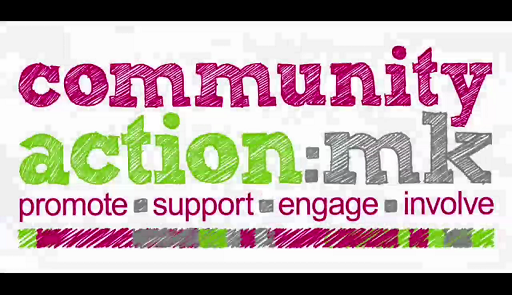Use 'Print preview' to check the number of pages and printer settings.
Print functionality varies between browsers.
Printable page generated Saturday, 22 November 2025, 12:13 PM
Week 7 Collaborative leadership and power
Introduction
This week you will explore the idea that power is an important feature of collaborative working, and one which collaborative leaders will need to negotiate. You will explore how a collaborative approach to leadership might help develop a positive approach to influencing the ideas, priorities and activities of other organisations.
After listening to an extract from Ellen’s story, you will explore the idea that a key purpose of many voluntary organisations is to ‘speak truth to power’. This phrase (which originates with the Quakers) encapsulates the idea that the voluntary sector has a role to play not only as a deliverer of services and activities, but also as an advocate – for communities, for the excluded, and for (some) social policies (and against others).
Following this, you will explore the idea that inter-organisational collaboration implies a sharing of power. However, in practice, collaboration frequently takes place in a context in which there are differences of power between collaborating organisations. We refer to these differences as ‘power asymmetry’.
The final section of the week introduces Huxham and Beech’s (2008) concept of ‘points of power’ as an idea that helps individuals think about how to enact influence in contexts of power asymmetry.
Throughout this week’s studies, we will ask what each of these ideas means for a collaborative approach to leadership of voluntary organisations.
Before we go further, let’s stop to think about what we mean by power. Power is a difficult concept, and it is impossible for us to rehearse here all the academic arguments about what power is and how it operates. For the purposes of this course, we draw on two key ideas. First, the idea that power is associated with social influence. This is an important idea for thinking about power in the context of collaboration, and we draw on Huxham and Beech’s definition of power in collaborative contexts as ‘the ability to influence, control or resist the activities of others’ (Huxham and Beech, 2008, p.555). The exercise of power is therefore seen in relationships and interactions between people, and our focus here is on the processes through which power operates, how influence happens, and the implications for leadership practice.
We also draw on the (perhaps more familiar) idea that the power of different organisations is associated with their respective resources, knowledge and expertise, importance or position. In simple terms this means that in many collaborations the larger, better-resourced and positioned organisations have the potential to determine the priorities and direction of any collaboration. Again, our purpose here is to help you think about how to enact influence in these contexts.
By the end of this week, you will be able to:
- identify and reflect on asymmetries of power in collaborative contexts
- reflect on issues that arise for leadership in collaborative contexts
- offer a critical account of the ‘shared power’ and ‘points of power’ approaches to collaboration
- reflect critically on how influence happens
- apply this learning to your practice.
1 Power and influence
Listen to another extract from Ellen.
Transcript
Ellen expresses concern that collaborating with other organisations means that they will have power over Family Time’s future. Her time and priorities are impacted by external agencies, and she struggles to see how she will be able to influence the regional partnership.
Although Ellen’s story is fictional, it reflects stories we have heard repeatedly about how it feels to work with, and endeavour to influence, larger organisations that have power to shape the focus and future of smaller voluntary organisations. Ellen’s thinking reflects the two ideas about power we introduced in this week’s introduction. First, she recognises that larger, better resourced and positioned organisations (particularly those in the public sector) have the power to shape Family Time’s future. Second, she begins to think about how she can work through relationships with key players – colleagues in different organisations – to influence the direction of travel of the new partnership arrangements.
2 Influencing others
The purpose of the following task is to help you think about whether influence always happens in expected directions when people from different organisations or departments come together. It is being introduced at the beginning of the reading, as you will need to allocate time to complete it during the week.
Practice of the week: influencing
Your task is to observe a meeting and reflect on how individuals influence one another. Select a ‘safe’ meeting from this week’s diary where you can tell other participants that you are conducting a small research project without jeopardising the interests of your organisation. Ideally, try to identify a meeting that is part of an ongoing inter-organisational collaboration, but if you feel uncomfortable with this, select an internal meeting.
You have two tasks:
- Take notes to record the interactions between individuals. Don’t worry if you do not capture all interactions, but try to capture the flow of a series of interactions. For example, Jo asks a question about the finances. Helen replies defensively but gives the financial details. Jo smiles, verbally welcomes the details, then comes back with a much more detailed second question challenging the figures.
- Reflect on your notes afterwards. Did influence always happen in the direction you would expect, or was it sometimes surprising? For example, perhaps junior staff influenced more senior staff or representatives of a small voluntary organisation influenced the representative of a larger or better-resourced organisation. What was the source of that influence? For example, it may have been the expertise of a particular staff member or organisation – or perhaps their local knowledge or relationship with the local community.
Like many of the practices explored in this course, influencing is a complex social practice. Paying detailed attention to the way influencing happens draws our attention to the power of words and of meaning-making. It makes us think about who influences who, how they do so and why. Observing influence may also lead you to reflect on the broader context – for example, the importance and position of different participants, both inside and beyond the meeting room.
In this week’s studies you will explore these issues further as we reflect together on collaboration and power.
3 ‘Speaking truth to power’
Never doubt that a small group of thoughtful, committed citizens can change the world; indeed, it's the only thing that ever has.
These words summarise a belief held by many within small (and not so small) voluntary organisations that they can make a difference in society. It is perhaps inevitable that this aspect of the purpose of the voluntary sector at times results in confrontation with other interests and groups in society. Voluntary organisations tell stories, surface issues, highlight alternatives and run campaigns that challenge established practices and priorities. These practices have something to teach us about how influence happens.
The history of voluntary organisations is littered with examples of ‘speaking truth to power’, and in the twenty-first century this advocacy role continues to be a part of many organisations’ identity. In this section, we reflect on two examples – the Hillsborough Family Support Group and the Living Wage campaign.
3.1 Changing the story
In this first example, you will read about how the Hillsborough families acted together to change a widely told story of football fans’ behaviour and its consequences.
Activity 1 The football fans' story
Read our account of the Hillsborough memorial event. As you read, reflect on the collaborative approach adopted by the Hillsborough campaigners.
Thirty thousand people gathered in the streets of Liverpool on 15 April 2016 to remember the 96 fans who died at Hillsborough football stadium. There had been many vigils and memorial services over the years, but this one was different. After a 27-year long fight for justice, a jury had determined that the fans were unlawfully killed, overturning an earlier judgement of accidental killing.
From shortly after the disaster, family members and survivors joined together to support one another, but also to campaign for justice, forming the Hillsborough Family Support Group and the Hillsborough Justice Campaign. They refused to accept that their loved ones died accidentally as a result of fans’ behaviour on that day, and took on the police and the British legal system in their attempt to prove that the actions of police and others contributed to the tragedy. They were not professional campaigners or legal experts, but were determined to go on with their campaign until they reached the truth of what happened. Eventually, their cause was taken up by MPs and other influential figures, but in the meantime they sacrificed other priorities to focus on their campaign for justice.
Twenty-seven years after their relatives died at a football match shown live on TV, family members stood on the steps of St George’s Hall, Liverpool at a memorial vigil – also shown live on TV.
Comment
As I (Carol) watched the vigil live on TV, I was struck by the way in which a large group of individuals, unknown to each other before this tragic event, some unborn at the time, acted together to make a difference - for themselves, for each other, and for a principle of justice. In a moving testament to the power of sustained collaboration in the face of continual discouragement, these families impacted UK society, and our ideas of justice. They turned around a widely told story of the violence of football fans, and replaced that story with a legal judgement that exonerated the fans from any responsibility for the tragic events in the football stadium that day.
3.2 Campaigning coalitions
A second way in which smaller voluntary organisations exert influence is by collaborating in coalitions to amplify their voice. This model for ‘speaking truth to power’ has a long history in the UK. Think of the 19th century anti-slavery movement in Britain. Although we remember the name of William Wilberforce, we forget that the anti-slavery movement took the form of a network of activists and campaigning groups. A contemporary example of the coalition model is seen in the work of Citizens UK and London Citizens. These are alliances of citizens, voluntary and community organisations, faith groups and schools, which have together generated a public discourse (and political response) around the issue of a ‘living wage’.
Activity 2 A citizen coalition
Go to the website of the Living Wage Foundation and read their account of the history of the living wage movement through the work of London Citizens and Citizens UK.
Reflect on the following questions in your learning journal:
- how were citizen groups able to influence large organisations and institutions to adopt the living wage?
- what do you think this might mean for the leaders of each organisation within the coalitions?
Make sure you title the post with the week number and the number of this activity, Week 7 Activity 2.
Comment
In an article for the Guardian (24 March 2010), Neil Jameson, Executive Director of Citizens UK, pointed to the significance of a shared model of leadership for coalitions like London Citizens – leadership constituted by leaders from across the coalition’s collaborating organisations. This is a model of leadership that moves away from any tendency to highlight the voice of individuals and instead presents leadership as distributed between organisations and individuals.
4 Collaboration and shared power
Last week, you were introduced to Crosby and Bryon’s model of integrative leadership. This builds on an assumption that the twenty-first century world is one in which power is shared. At a basic level, this is a straightforward assumption for those of us living in the developed world. Increasingly, we acknowledge that no one organisation or group of people – including government – should determine the future, without engaging with other organisations, communities, experts, service users, businesses and citizens. As explored in the previous sections, we recognise the right of campaigning organisations and citizen groups to impact the ways in which society thinks about and addresses such issues.
This understanding of shared power is fundamental to the ways in which inter-organisational collaboration has grown and developed over the last 20 years, with a proliferation of ‘partnerships’, ‘integrated services’, joint working groups and opportunities for voluntary organisations and citizen groups to participate in co-producing public services, determining local priorities and influencing the future development of communities.
4.1 Partnership and participation
Sharing power implies enabling citizens to participate in the shaping of their community. In the next activity, we explore one approach to enabling community participation.
Activity 3 Community mobilisers
Watch this video from the Community Mobiliser Team from Community Action: MK in which they talk about their work to mobilise citizens to contribute to the shaping of their communities.

Transcript
[MUSIC PLAYING]
As you watch, ask yourself the following questions:
- How do the mobilisers enable citizens to influence the way in which their community develops?
- How might the work of the mobiliser team influence the council and other public sector organisations?
- To what extent do you recognise the work of ‘mobilising’ as leadership as defined in Week 1 of this course? Copy this definition of leadership to your learning journal. Make notes about the key words from this definition that you recognise in the mobilisers’ accounts of practice. Make sure you title the post with the week number and the number of this activity, Week 7 Activity 3. Leadership is a collaborative, political and democratic practice that provides direction, energy and critical engagement on issues that are made to matter.
Comment
The community mobilisers may not describe themselves as leaders, but we recognise leadership in their practice. They provide energy and engagement on issues that are important to local citizens. Their practice engages citizens with the political process, ensuring their voices are heard, as well as supporting citizens to shape their own community through the creation of residents’ associations, community activities, and support groups. They influence which issues emerge in the local area and which remain unexplored.
4.2 Power asymmetry
The work of the mobilisers could be described as a collaboration or partnership between the council, Community Action: MK and citizens, through which power to shape the local community is shared – albeit not necessarily shared equally. However, attempts to collaborate across organisational boundaries are not always characterised by a shared approach to power. Instead, collaboration may simply highlight power asymmetry – the differences in resources (financial and otherwise), knowledge and expertise and the importance or position of collaborating organisations.
This asymmetry is evidenced in the complex collaborative arrangements between voluntary organisations and public agencies. Before becoming a lecturer, Carol worked in the children’s services field in which collaboration between voluntary and public sectors was a daily reality in the endeavour to integrate services for families and increase child wellbeing. Leaders from both sectors met regularly in planning forums and working groups, as well as on the frontline of service delivery. Much of this work was driven and sustained by government policy and funding channelled through public sector agencies to achieve that policy. In practice, this meant that the public agencies wielded power over the voluntary organisations through formal commissioning arrangements, but also through the ability to determine priorities in line with government policy.
The voluntary sector literature raises important questions about how power is shared (or not shared) in such contexts, and what the implications are for voluntary organisations, where collaborating organisations have different resources, knowledge and expertise, influence and importance. In particular, commentators have increasingly raised concerns about the impact of collaborating with public agencies on voluntary organisations and their independence. Some have proposed that collaboration within the sector provides a way forward to address sectoral imbalance. However, you may have some hesitation in accepting that in-sector collaboration is necessarily a way to tackle power asymmetries. This may be because experience tells you that even within the sector well-intentioned organisations and their leaders find themselves in competition and conflict with each other.
5 Influence, meaning-making and micro-level power
For many of us, working with power asymmetry is not comfortable. It is perhaps for this reason that we have observed that many collaborative partnership meetings seem to avoid surfacing these asymmetries, and instead proceed as if power is shared equally, or as if ‘partnership’ in some way negates power.
In Carol’s research, she noted a contrast between this public performance of collaboration and informal backstage discussions. Participants suggested that, even where they are well aware of the greater resources, influence, importance or position of the organisations with which they collaborate, they still believe they are able to make a difference, and they focus this belief on the relational aspects of collaboration. Huxham and Beech (2008) refer to power at this relational level as ‘micro-level power’.
Micro-level power is seen in day-to-day activities, in ‘points of power’ which are played out in relationships between people as they collaborate. This contrasts with macro-level power, which is based on resources, importance and structural position (Huxham and Beech, 2008). In other words, in the context of inter-organisational collaboration, the macro-level power of an organisation is associated with its control of resources that others need; its importance to the strategic purposes of other organisations; and its position in the structures of collaboration. These all enable an organisation to wield power over others.
Research tells us that power is exercised more subtly at the micro-level through discourse and meaning-making. Discursive approaches focus on the use of language as a source of power. Although this may sound like a somewhat obscure academic concept, we all have experiences that reinforce the idea that words have power. This is closely related to the concept of ‘voice’ (Hirschman 1970). In the voluntary sector context, ‘voice’ is the ability to name, frame and campaign on issues of concern to the sector – rather than simply acting on issues which have previously been recognised by society. This approach also resonates with the idea in the leadership literature that leadership practice can be thought of as associated with meaning-making (Smircich and Morgan, 1982).
In one example, a research participant from a voluntary organisation explained that in local partnership meetings the first interpretation of national policy is often provided by voluntary sector representatives, as complex public sector bureaucracy is still determining an official line. This first micro-level interpretation impacts on the continuing interpretation and enactment of policy at the local level. It becomes embedded in the notes of meetings, is repeated by public sector managers, and played back into decision-making forums.
The work of London Citizens provides a second example of the power of discourse and meaning-making in the discursive production of the ‘living wage’. As you discovered in Activity 2, the living wage concept originated with parents in East London working two minimum wage jobs who were unable to support their family. In other words, the living wage started as a framing of a particular social issue by the people who encountered that issue in their daily lives. Through London Citizens, communities, businesses, campaigners and faith groups came together to campaign for wages which are good for business, but also good for the individual and for society. Over time, the living wage campaign developed its own identity as a national movement. The Living Wage Foundation has successfully persuaded employers of all sizes to implement a Living Wage for their staff, and the term ‘living wage’ has entered the political discourse.
Activity 4 Influencing words
Look at the front page of a website of a voluntary organisation you consider to be influential. Select 10-12 key words from the web page that you consider influencing words. Write down the sentences in which these words appear. Now reflect on why these key words stood out for you. What is it about the language and the meaning they make that began to influence you?
Comment
Most of us probably feel that our words are unlikely to have the impact of the living wage campaign. However, we recognise that the history of the voluntary sector is littered with interpretations of policy and the naming of social need by small groups of people that ultimately change the way society understands itself and its limitations. Think here of the modern day slavery movement. At the turn of the twenty-first century, very few people would have accepted that ‘slavery’ was a significant social issue requiring changes in social policy. Surely, slavery had been confined to history? Now we have the Modern Slavery Act in England and Wales and the Human Trafficking and Exploitation Act in Scotland – all because a small group of individuals and voluntary groups raised their voices and offered a meaning of ‘slavery’ to make sense of relationships between people that are considered unacceptable in the twenty-first century.
So, how might you draw on the two ideas of micro-level power and leadership as meaning-making in your own leadership practice?
Beech and Huxham (2008) argue that every time individuals have the potential to influence the discourse or to take action within a collaboration, this can be seen as a potential source of power. Often, individuals are unaware of these ‘points of power’, but at this micro level all individuals can influence the direction of the conversation, the text of a document or the nature of agreed actions; they can resist the imposition of ‘agreed’ interpretations and offer alternatives. Micro moments of power can be impacted by any individual, with or without formal position. While this does not immediately impact on asymmetries of power at the macro level, micro-level power will occasionally result in macro-level changes, as suggested by the living wage example.
Activity 5 Micro power
Review your notes for Activity 1. You should now be able to see that we are asking you here to identify points of micro power. Tell us on our discussion forum whether you find this approach helpful to your leadership practice – or not. What do you see as the limitations of this approach to negotiating the power dynamics of collaboration? Make sure you post your comments within the correct thread for this activity.
Comment
One criticism of the micro-level approach to power is that, in focusing attention on language and relationships, it fails to address embedded structural inequalities. A related criticism is that it reduces power dynamics between organisations to the inter-personal level, and consequently gives space to dominant personalities to impose themselves on the collaboration. Join the discussion in our collaborative forum to share your thoughts on micro-level power and practices of meaning-making. Is this a way to amplify voluntary sector voice, or a failure to take sufficient account of the power asymmetry in which the sector operates?
Week 7 quiz
Check what you’ve learned this week by taking the end-of-week quiz.
Open the quiz in a new window or tab then come back here when you’ve finished.
To open in a new window, right click on the link above and select ‘Open in new window’.
Summary of Week 7
We started our learning this week by thinking about different ways in which individuals and citizen groups exert influence and ‘speak truth to power’. We have ended our learning with a focus on language and meaning-making at the micro-level – in the practices of the ordinary meetings of ongoing collaboration.
Power is a complex issue, and we can only touch here on the ways in which a collaborative approach is impacted by power asymmetries. To be clear, our aim here is not to make a political point, but rather to raise your awareness of the issues of power at work, even as voluntary organisations develop a collaborative approach with individuals and organisations across the public arena.
Next week is the final week of the course, in which you will consider collaborative leadership in the context of long-term collaboration across different organisations and sectors and through multiple partnership arrangements and joint projects
Now go to Week 8.
Keep on learning

Study another free course
There are more than 800 courses on OpenLearn for you to choose from on a range of subjects.
Find out more about all our free courses.
Take your studies further
Find out more about studying with The Open University by visiting our online prospectus.
If you are new to university study, you may be interested in our Access Courses or Certificates.
For reference, full URLs to pages listed above:
OpenLearn – www.open.edu/ openlearn/ free-courses
Visiting our online prospectus – www.open.ac.uk/ courses
Access Courses – www.open.ac.uk/ courses/ do-it/ access
Certificates – www.open.ac.uk/ courses/ certificates-he
Newsletter – www.open.edu/ openlearn/ about-openlearn/ subscribe-the-openlearn-newsletter
References
Acknowledgements
This free course was written by Owain Smolović Jones and Carol Jacklin-Jarvis.
Except for third party materials and otherwise stated (see terms and conditions), this content is made available under a Creative Commons Attribution-NonCommercial-ShareAlike 4.0 Licence.
The material acknowledged below is Proprietary and used under licence (not subject to Creative Commons Licence). Grateful acknowledgement is made to the following sources for permission to reproduce material in this free course:
Images
Figure 1: stylephotographs ©123RF.com
Figure 2: © Wonder woman0731 in Flickr https://creativecommons.org/licenses/by/2.0/
Figure 3: John Finn in Flickr https://creativecommons.org/licenses/by-nc-nd/2.0/
Video
Activity 3: extract: courtesy: Community Action: MK https://communityactionmk.org/; https://communityactionmk.org/projects/expansion-mk/eastern-expansion-area/
Every effort has been made to contact copyright owners. If any have been inadvertently overlooked, the publishers will be pleased to make the necessary arrangements at the first opportunity.
Don't miss out
If reading this text has inspired you to learn more, you may be interested in joining the millions of people who discover our free learning resources and qualifications by visiting The Open University – www.open.edu/ openlearn/ free-courses.


